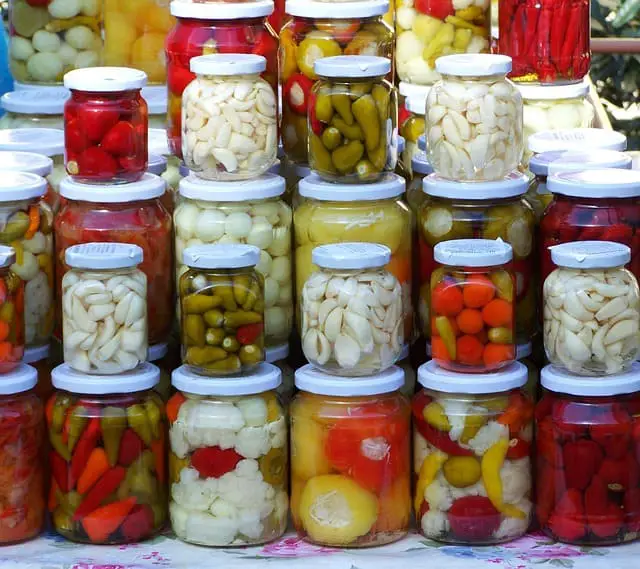Pickling spices are a blend of spices that are commonly used to flavor pickled vegetables and fruits. The blend typically includes spices such as mustard seed, dill seed, coriander seed, bay leaves, and peppercorns.
Regular spices, on the other hand, refer to individual spices or spice blends that are used in cooking and baking. These can include things like cinnamon, nutmeg, cumin, paprika, and many others.
In short, pickling spices are a specific blend of spices designed to add flavor to pickled foods, while regular spices can be used in a wide range of culinary applications.
Pickling spices can add different flavors and taste
The specific spices used for pickling can vary depending on the recipe, but some common spices used in pickling blends include:
- Mustard seed: adds a pungent, spicy flavor
- Dill seed: adds a characteristic dill flavor
- Coriander seed: adds a warm, citrusy flavor
- Bay leaves: add a slightly sweet, woodsy flavor
- Peppercorns: adds a spicy, pungent flavor and heat
- Cloves: adds a warm and sweet flavor
- Allspice berries: adds a warm and sweet flavor
- Juniper berries: adds a piney and citrusy flavor
- Cayenne pepper or red pepper flakes: adds heat
- Cinnamon sticks or ground cinnamon: adds a sweet, warm flavor
These are some of the common spices that can be found in pickling blends, but other spices such as ginger, nutmeg, star anise, cardamom, etc can also be added to the pickling blends to enhance the flavors. The blend can be adjusted to personal taste and preferences.
What is the process of pickling?
Pickling is a preservation method that involves immersing foods in an acidic solution, typically vinegar or brine, to inhibit the growth of bacteria and extend the shelf life of the food. Some common foods that are pickled include cucumbers (for making dill pickles), green beans, onions, beets, carrots, and fruits such as watermelon rinds, peaches, and berries.
The process of pickling typically involves first cleaning and preparing the food, then packing it into jars with pickling spices and the acidic solution. The jars are then sealed and heated, either through a water bath canning process or by using a pressure canner, to create a vacuum seal that helps to preserve the food.
Pickling offers a number of benefits. It allows you to preserve and enjoy the taste of fresh fruits and vegetables year-round, even when they are not in season. It also allows you to create unique and flavorful condiments and snacks.
Additionally, pickling can help to increase the nutrient density of food. The process of pickling can increase the bioavailability of some vitamins and minerals, particularly vitamin K and vitamin C, which is beneficial for overall health.
What are the benefits of pickling foods?
Pickling foods offers a number of benefits, some of which include:
- Preservation: Pickling is a method of food preservation that allows you to enjoy the taste of fresh fruits and vegetables year-round, even when they are not in season.
- Flavor enhancement: Pickling can add unique and delicious flavors to foods, and can be used to create delicious condiments and snacks.
- Nutritional benefits: Pickling can increase the nutrient density of food. The process of pickling can increase the bioavailability of some vitamins and minerals, particularly vitamin K and vitamin C, which is beneficial for overall health.
- Gut health: Pickling can also promote gut health by encouraging the growth of beneficial bacteria through fermentation.
- Variety: Pickling can be done with a wide variety of fruits and vegetables, allowing you to try new flavors and experiment with different types of pickled foods.
- Convenience: Pickling can be done in bulk, allowing you to have a stock of pickled foods on hand for easy meals and snacks.
- Cost-effective: Pickling can be a cost-effective way to preserve food, especially when done in bulk with produce that is in season and abundant.
It’s important to note that not all pickling methods are the same and some can be less safe than others. To ensure safe pickling, it is important to use tested recipes and to follow proper canning and sterilization techniques.

